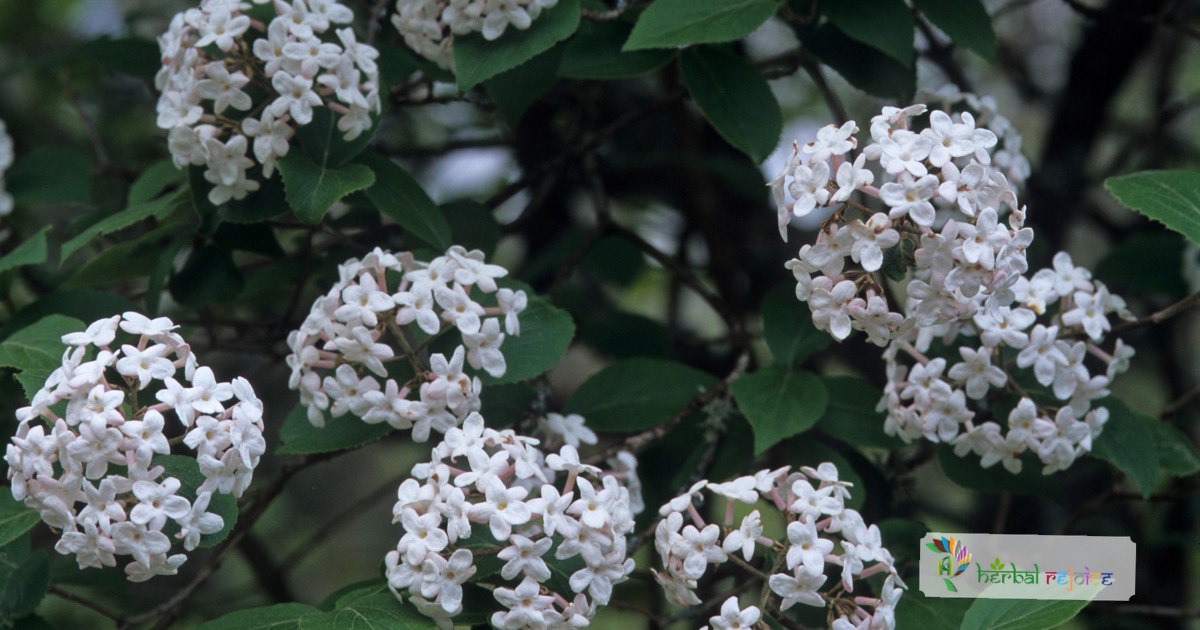Introduction
Viburnum opulus Linn. var. americanum (Mill.) Ait, commonly known as Cranberry Bush or Crampbark, is a plant native to North America. The dried bark of this plant is imported into India for various medicinal purposes.
In traditional medicine, crampbark is known for its diuretic properties and its used as a uterine sedative in functional uterine disorders.
Therapeutic Effects of Crampbark
The therapeutic effects of Viburnum opulus var. americanum bark can be attributed to its content of various compounds. The presence of uterine relaxants in the bark is believed to be responsible for its effectiveness in treating uterine disorders.
These relaxants act directly on the uterine muscle, rather than through sympathomimetic action. Some of the key components found in the bark include an essential oil, an amorphous bitter phenolic glucoside, esculetin, and scopoletin.
Chemical Constituents Of Crampbark
Hydroquinones, arbutin, methylarbutin, and traces of hydroquinone are also present in the bark. Coumarins such as scopoletin and scopoline are other bioactive compounds found in the bark.
Additionally, the bark contains tannins, primarily catechins. It is worth noting that the bark’s polycondensed tannins have shown a significant protective effect on blood vessels in rats.
Potential Health Benefits Of Crampbark
Overall, Viburnum opulus var. americanum has been used for centuries in traditional medicine for its diuretic and uterine sedative properties.
Its bark contains a variety of bioactive compounds that contribute to its therapeutic effects. The plant has a long history of traditional use and continues to be studied for its potential medicinal applications.

Conclusion
In conclusion, Viburnum opulus Linn. var. americanum (Mill.) Ait, commonly known as Cranberry Bush or Crampbark, is a plant native to North America.
The dried bark of this plant is imported into India and has been used for its diuretic and uterine sedative properties in traditional medicine. Its bark contains various bioactive compounds, including uterine relaxants, hydroquinones, coumarins, and tannins.
The plant has a rich history of traditional use and continues to be studied for its potential medicinal applications.
Frequently Asked Questions(FAQs)
What is Crampbark?
Crampbark is a plant native to North America, commonly known as Cranberry Bush or Crampbark.
What is the medicinal use of Crampbark?
The dried bark of Crampbark Crampbark is imported into India for various medicinal purposes.
What are the key compounds found in the bark of Crampbark?
The bark contains an essential oil, an amorphous bitter phenolic glucoside, esculetin, scopoletin, hydroquinones, arbutin, methylarbutin, coumarins, and tannins.
What are the therapeutic effects of Crampbark?
Crampbark is known for its diuretic properties and its use as a uterine sedative in functional uterine disorders.
How does Crampbark treat uterine disorders?
The bark of Crampbark contains uterine relaxants that act directly on the uterine muscle to treat uterine disorders.
What is the role of coumarins in Crampbark?
Coumarins, such as scopoletin and scopoline, are bioactive compounds found in the bark of Crampbark.
Are there any specific tannins present in the bark of Crampbark?
The bark contains polycondensed tannins, primarily catechins, which have shown a protective effect on blood vessels in rats.
What is the traditional use of Crampbark?
Crampbark has a long history of traditional use for its diuretic and uterine sedative properties.
Does Crampbark have any potential medicinal applications?
Yes, Crampbark continues to be studied for its potential medicinal applications.
Is Crampbark safe for consumption?
As with any medicinal herb, it is recommended to consult a healthcare professional before consuming Crampbark for medicinal purposes.
Can Crampbark be used to treat urinary tract infections?
Crampbark has diuretic properties and may provide some relief, but it is not a substitute for medical treatment of urinary tract infections.
Does Crampbark have any side effects?
Side effects may vary based on individual sensitivity.
Is Crampbark available in other forms besides dried bark?
Crampbark may be available in other forms such as tinctures, capsules, or teas.
Can Crampbark be used for pain relief?
Crampbark has been traditionally used as a uterine sedative, but it is not typically used for general pain relief.
Can Crampbark be used to regulate menstrual cycles?
Crampbark has been traditionally used for its uterine sedative properties, which may help regulate menstrual cycles.
Is Crampbark effective for treating menopausal symptoms?
While Crampbark has been used traditionally, more research is needed to determine its effectiveness for treating menopausal symptoms.
Is Crampbark addictive?
There is no evidence to suggest that Crampbark is addictive.


